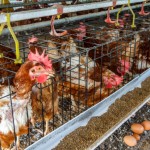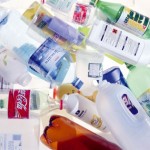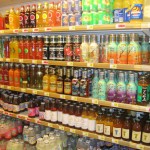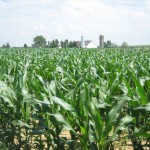10 Chemicals in Your Food That You’re Better Off Without
- Coloring Agents
Coloring agents (blue 1, blue 2, yellow 5, and yellow 6) are chemicals used to brighten and color up foods such as cheese (including your favorite mac and cheese), candy, medicines, sport drinks, soda, pet food, cake and fish… just to
name a few. Around 1955 these chemicals started being used more abundantly here in the U.S. Before that point, saffron and turmeric was used as food coloring. Now a days most of our food coloring comes from coal tar.
Research has shown links between Yellow 5 and allergies, skinrashes, hyperactivity and migraines. Yellow 5 has been banned in Norway, Australia and reduced or banned in other countries.
- Arsenic
Some meat companies here in the U.S. use arsenic in poultry feed to help sell their chickens. The arsenic affects the chicken’s blood vessels making the meat look more pink and appear fresher. Poultry companies believe this helps sell chickens to the consumer who is looking for freshness. According to sciencedaily.com, “Arsenic has been linked to bladder, lung, skin, kidney and colon cancer, while low-level exposures can lead to partial paralysis and diabetes.” This use of arsenic in this manner is banned in The European Union.
- Synthetic hormones
Synthetic hormones BGH and RBST are found in milk and dairy products. Some dairy farmers inject genetically-engineered cow growth hormones so that their cows will produce 10% more milk. RBGH and RBST are banned in Canada, Japan, Australia, New Zealand, and in the 27 countries of the European Union. The FDA approved RBGH in 1993 although various advocates for safe food feel that RBGH was never properly studied for negative health effects on humans.
- Bisphenol A (BPA)
Bisphenol A is found in hard plastic bottles and metal-based food and beverage cans. Research shows that BPA exposure is linked to breast cancer. BPA is found in a wide range of plastic items found here in the United States. According to Medicalnewstoday.com, “Bisphenol is an endocrine disruptor – a substance which interferes with the production, secretion, transport, action, function and elimination of natural hormones.” Countries who ban BPA are France, Sweden and Belgium. In Malaysia, South Africa, China and in Denmark the law prohibits BPA on products intended for babies or young children.
- Brominated Vegetable Oil (BVO’s)
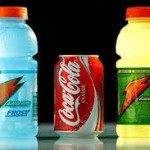
This chemical is used as a stabilizer in sports drinks and soda. BVO’s are banned in more than 100 countries because it contains bromine, a chemical whose vapors can be corrosive or toxic. According to Webmd.com, “In 1997, doctors were stumped by the case of a man who came to the emergency room with headaches, fatigue, and a loss of muscle coordination and memory. He continued to get worse over time, and eventually he lost the ability to walk. A blood test found sky-high levels of bromide.” Europe and Japan have banned BVO’s.
- Azodiocarbonamide
This chemical is used to bleach white flour. According to Onlinelibrary.wiley.com, “a strong association was observed for injection molding workers and eye/nose/throat irritation, cough, and wheezing. Additionally, wheezing, chest tightness, and symptoms of chronic bronchitis were strongly associated with work in injection molding during periods in which azodicarbonamide was in use.” It’s also banned in many European countries, the UK and Australia.
- Olestra (Olean)
This chemical is found in fat free chips. According to Bodyunburdened.com, “this fat substitute appears to cause a dramatic depletion of fat-soluble vitamins and carotenoids, robbing us of the vital micro-nutrients.” Negative health effects include loose stools, abdominal cramping, and Olestra‘s interference with the body’s ability to absorb certain crucial vitamins, namely Vitamins A, D, E, and K. Olestra (Olean) is banned in the U.K. and Canada.
- High Fructose Corn Syrup (HFCS)
This popular item is processed from corn sugar with a chemical enzymatic process and it is used as a sugar substitute because it is cheaper. According to Drhyman.com, “ It is extracted from corn stalks through a process so secret that Archer Daniels Midland and Carghill would not allow the investigative journalist Michael Pollan to observe it for his book The Omnivore’s Dilemma.” In the 1970′s, HFCS usage became much more vast with food and beverage manufacturers because HFCS is cheaper than table sugar and HFCS is much sweeter. Much of the food that contains HFCS contains mercury; which is not good for the human nervous system. HFCS is known to worsen diabetes, cause Metabolic Syndrome, damage to your immune system and speed-up aging process.
- Genetically Modified Organisms (GMO’s)
These are found in a wide range of foods. Nongmoproject.org states, “In more than 60 countries around the world, including Australia, Japan, and all of the countries in the European Union, there are significant restrictions or outright bans on the production and sale of GMOs.” GMO’s are found in a lot of vegetables grown here in the U.S. and 88% of the corn fed to cows contains GMOs. Soy beans and Canola Oil most commonly have GMO’s in them as do processed foods or non organic foods. According to Organicconsumers.org tests on lab rats has shown “the stomach lining of rats fed GM potatoes showed excessive cell growth, a condition that may be a precursor to cancer. Rats also had damaged organs and immune systems.”
10. BHA (Butylated Hydroxyanisole) and BHT (Butylated Hydroxytoluene)
These chemicals are used as a preservative to prevent oils in foods from oxidizing; in other words going bad. According to Examiner.com, “Concerns with BHT come from lab tests showing that it can cause cancer in animals, thus leading to the assumption that it may have the same affect in people.” The U.K., Japan, and many other European countries have banned the use of these chemicals.
http://www.fda.gov/newsevents/publichealthfocus/ucm064437.htm
http://foodmatters.tv/articles-1/8-additives-from-the-us-that-are-banned-in-other-countries
http://www.wisegeek.com/what-is-olestra.htm
http://civileats.com/2009/01/27/is-high-fructose-corn-syrup-turning-us-into-mad-hatters/
http://www.mercola.com/Downloads/bonus/danger-of-corn-syrup/report.aspx
http://onlinelibrary.wiley.com/doi/10.1002/ajim.4700110109/abstract
http://www.webmd.com/food-recipes/news/20130129/brominated-vegetable-oil-qa
http://www.organicconsumers.org/articles/article_11361.cfm
http://organic.about.com/od/organicdefinitionsqr/g/Rbgh-Definition-Of-Rbgh.htm
http://www.organicvalley.coop/why-organic/synthetic-hormones/about-rbgh/
http://www.sustainability-support.com/index.php?option=com_content&view=article&id=149
http://www.foodcontactmaterials.info/BPA_France.html#.U0SmjiiftS8
http://www.medicalnewstoday.com/articles/221205.php
http://www.sciencedaily.com/releases/2007/04/070409115746.htm
http://www.whydye.org/resources/health-effects-by-color/
http://www.wikihow.com/Dechlorinate-Water
http://www.examiner.com/article/bht-the-harmful-food-additive-your-everyday-diet
http://www.berkeleywellness.com/healthy-eating/food-safety/article/two-preservatives-avoid
http://bodyunburdened.com/chemicals-banned-allowed-in-us-food/
http://www.dailyfinance.com/2013/11/21/foods-give-up-avoid-eating-gmo/#!slide=1585649
http://www.nongmoproject.org/learn-more/
http://www.organicconsumers.org/articles/article_6210.cfm
http://drhyman.com/blog/2011/05/13/5-reasons-high-fructose-corn-syrup-will-kill-you/#close
http://abcnews.go.com/Lifestyle/Food/11-foods-banned-us/story?id=19457237#5
http://www.breastcancerfund.org/clear-science/environmental-breast-cancer-links/food/
http://www.cancer.org/cancer/cancercauses/othercarcinogens/athome/recombinant-bovine-growth-hormone
https://shine.yahoo.com/healthy-living/banned-ingredients-still-legal-u-132100120.html
*****
You can contact Jon Lipshaw at: JonLipshaw@gmail.com or 561.602.5853
Or visit Jon’s Blog: JonLipshaw.com.




